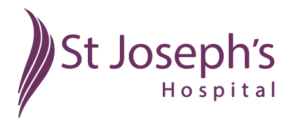Patient Information
Rotator Cuff Repair
What are the aims of surgery?
Arthroscopic rotator cuff repair aims to restore shoulder function and relieve pain and discomfort.
What needs to be done prior to surgery?
The decision to have surgery to repair a rotator cuff tear should only be made after thorough
discussion with your surgeon. You should be satisfied that you have all the information you require
in order to make an informed decision and that you are aware of both the potential risks and
benefits of the planned procedure. It is important that you fully disclose any health problems you
may have had. Some may interfere with surgery, anaesthesia or aftercare. You should inform your
surgeon and anaesthetist of previous allergies or reactions to antibiotics, anaesthetics or other
medicines and in particular of any problems with prolonged bleeding or excessive bruising. Anti-inflammatories or other drugs which increase bleeding may need to be stopped prior to surgery.
You should stop smoking at least two weeks before surgery as smoking increases the risks of
surgery and impairs healing.
If you decide to have surgery, your surgeon will ask you to sign a consent form. Read it carefully
and raise any questions. It may be necessary for additional procedures to be performed at the time
of surgery if the arthroscopic findings vary from the imaging studies.
As you may need help with you daily activities after the operation you should make the necessary
arrangements prior to surgery.
What does the operation involve?
The arthroscopic surgical technique involves making several (usually 3) small incisions less that
1cm long around the shoulder so that the tendon(s) can be repaired using keyhole techniques.
Rarely a larger incision may be required to complete the procedure. The procedure is performed
using an arthroscope which is a thin instrument attached to a video camera and light source. It
allows the operating surgeon to see inside the shoulder joint and perform the procedure while
viewing a video monitor. The arthroscope is inserted into the shoulder. Working through other
small incisions, the surgeon uses small instruments to trim the tendon edges. Small burrs are used
to prepare the bone for tendon repair and may additionally be used to remove any bone spurs that
may be pressing on the tendon. Small anchors, with stitches attached, are fixed into the bone.
These anchors may be made of metal, plastic or an absorbable synthetic material. The stitches are
then passed through the torn end of the tendon and tied. The incisions are closed with one or two
stitches or small adhesive strips and dressings are applied. Local anaesthetic will usually be
injected into the wounds to help with postoperative pain control. After surgery, you will be
transferred from the operating theatre to the recovery room where nursing staff will monitor your
recovery and administer further pain relief if needed.
What happens after the operation?
Your arm may be in a sling or shoulder immobiliser. This is to protect the shoulder, relieve pain and
maintain it in the correct position. You may be able to go home on the day of surgery but an
overnight stay may be required. You will be unable to drive, so should arrange for someone else to
drive you home. You will normally have a follow-up visit with your orthopaedic surgeon within the
first couple of weeks of surgery. Stitches are usually removed at this visit.
What rehabilitation is needed?
While the shoulder is healing some pain and discomfort should be expected. You may need to use
pain-killers during this period. It may be difficult to perform some day to-day activities for two to
three months following the procedure.
Your physiotherapist will design an exercise program for you. This is important to your recovery
and should begin shortly after surgery. It starts with gentle exercises that gradually help you regain
shoulder movement. After about six weeks, exercises are introduced in order to help strengthen
the muscles. Your surgeon will advise you about a timescale for return to work and resumption of
normal activities. Recovery takes time and depends on the type of surgical repair. It commonly
takes several months and possibly up to a year for strength, comfort and full function of your
shoulder to return to normal.
What are the likely outcomes of surgery?
In some patients, rotator cuff tears cannot be repaired. The success of surgical treatment depends
on the size, thickness and location of the tear the quality and amount of tendon tissue still
remaining the length of time the tendon has been torn. If the tear has existed for some months or
years it may be that the tendons and muscles are contracted and cannot be stretched far enough
to allow re-attachment.
Surgery cannot improve the strength of tendons. If the tendon tissue is weak, more tears may
occur. In this situation further surgical procedures may be required.
What complications are associated with the procedure?
As with all surgical procedures there are risks associated with the procedure despite the highest
standards of practice. Complications can occur that may have permanent effects. It is not possible
to outline every possible side effect or rare complication however, it is important that you have
enough information about the possible complications of the procedure to fully weigh up the benefits
and risks of surgery.
Possible complications of surgery include wound infection (treatment with antibiotics may be
needed, and a second or third operation may be needed to treat the infection). Pain, discomfort or
bleeding from around the incisions may occur. Most scars fade and flatten, but some may become
“keloid” and remain raised, itchy, thick and red. Further treatment may be needed to try to improve
the scar.
In unusual cases, pain may not resolve over the long term. Persistent stiffness of the shoulder joint
may require additional treatment. Injury may occur to nerves close to the surgical area.




